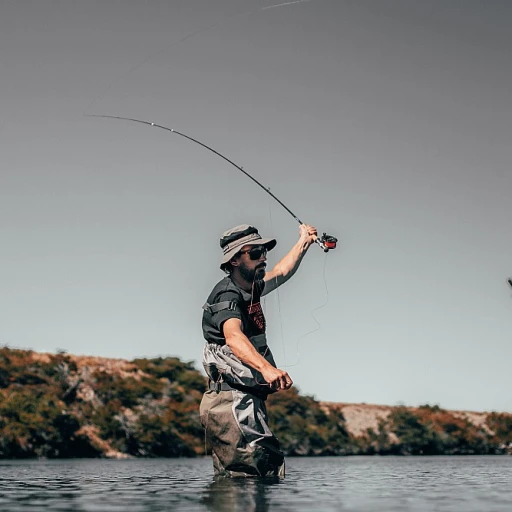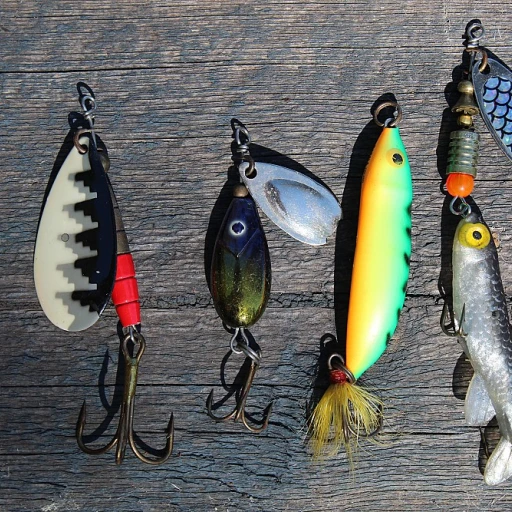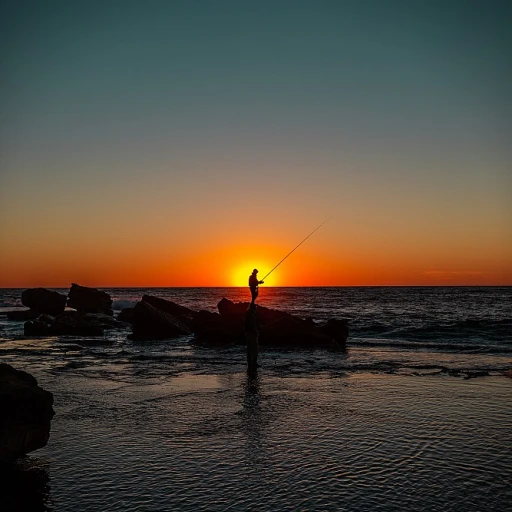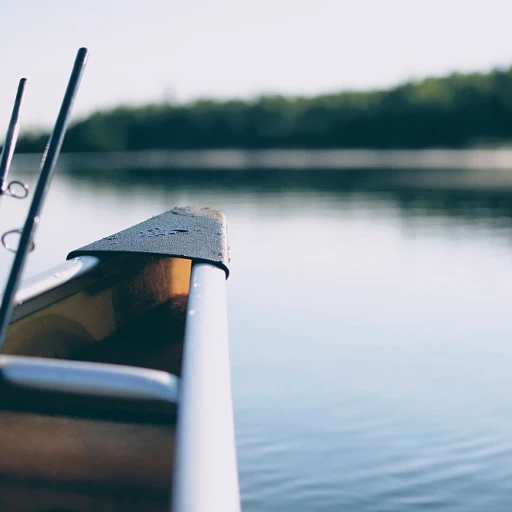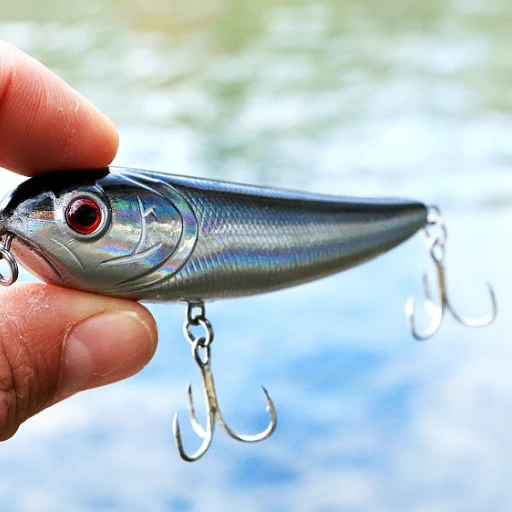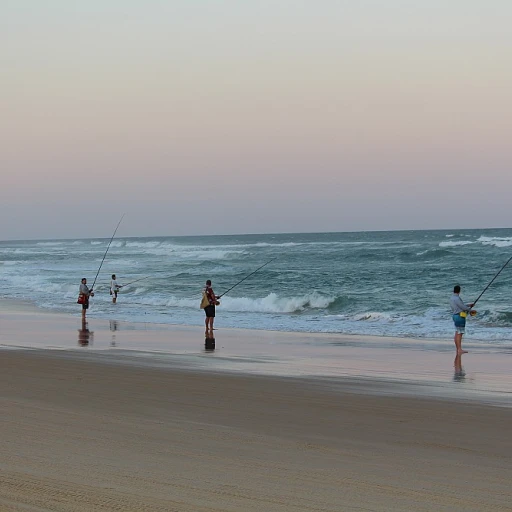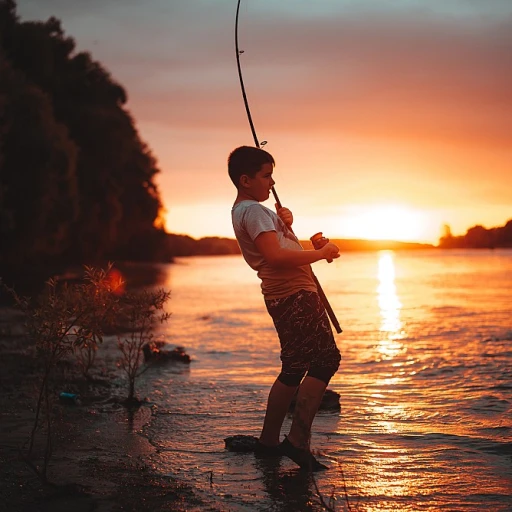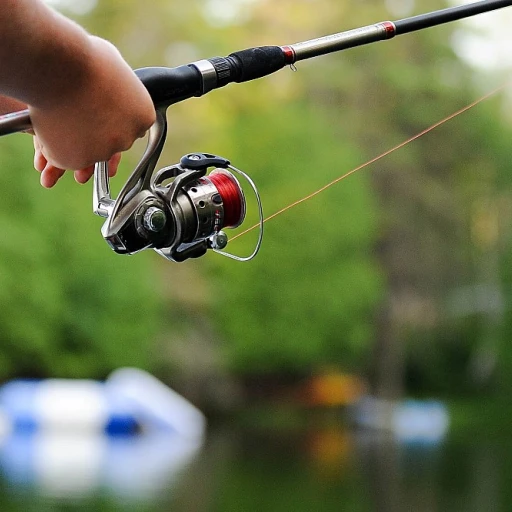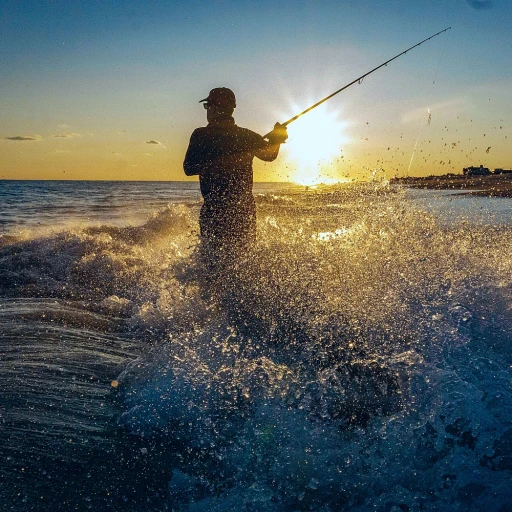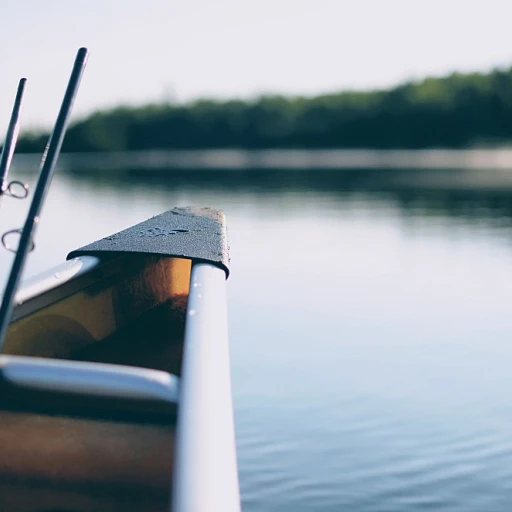
Understanding the Basics of Fishing Rods
Demystifying Fishing Rod Basics for Newbies
If you're new to the world of recreational fishing, one of the first things you'll need to familiarize yourself with is the fishing rod. Understanding its basics not only enhances your fishing experience but also ensures you're well-equipped to catch your desired fish with ease. Let's explore the key elements of fishing rods to help you make informed choices in your fishing adventures.
Features to Consider
- Material: Fishing rods come in various materials, with carbon fiber being a popular choice for its high modulus and durability. It offers a lightweight feel and superior sensitivity, which is crucial for detecting bites.
- Guides: These are critical components that influence casting performance. When shopping, consider how the rod's guides impact the line's friction and casting distance.
- Reel Seat: An often overlooked element, the reel seat ensures your reel is securely attached to the rod. Look for comfort and security in this component.
Rods: Spinning or Casting?
One major divide in fishing rods is between spinning rods and casting rods. Both have their unique set of advantages and should be chosen based on your fishing style. Spinning rods are beginner-friendly, while casting rods offer greater control and are often preferred by experienced anglers.
Power and Action
When selecting a rod, considering its power and action is crucial. Power, or rod strength, determines the type of fish you can comfortably catch, while the action defines the rod's bend. Balancing these two features can significantly enhance your fishing experience.
For more in-depth guidance on fishing essentials, explore our comprehensive guide on essential surf fishing gear.
Choosing the Right Rod for Your Fishing Style
Finding the Perfect Match for Your Fishing Style
Choosing the right fishing rod is crucial for enhancing your fishing experience. Whether you're a fan of spinning rods or casting rods, each type offers unique advantages tailored to specific fishing styles. Understanding these differences can help you make an informed decision.
Spinning rods are popular for their versatility and ease of use, making them a great choice for beginners. They are ideal for light tackle and are often used for catching smaller fish. On the other hand, casting rods offer more power and control, suitable for targeting larger fish species. If you're into fly fishing, fly rods are specifically designed for this technique, providing the necessary flexibility and precision.
Consider Your Fishing Environment
Your fishing environment plays a significant role in selecting the right rod. If you often fish in freshwater, a medium power spinning rod might suffice. However, for saltwater fishing, where conditions can be more demanding, a high modulus carbon fiber casting rod could be more appropriate. These rods feature enhanced durability and strength, ensuring they withstand the harsh marine environment.
Budget and Quality
When it comes to price, fishing rods are available across a wide range. While it's tempting to go for the cheapest option, investing in a quality rod can make a significant difference in your fishing success. Look for rods that offer a good balance between price and quality. Many rods are sold with features like a sturdy reel seat and durable guides, which can enhance your fishing experience.
For those looking to enhance their fishing experience further, consider exploring the right flooring for pontoon boats. This can provide a stable and comfortable platform for your fishing adventures.
The Importance of Rod Material and Construction
The Significance of Materials in Your Fishing Rods
When it comes to selecting the perfect fishing rod, the material it's made from plays a pivotal role in your overall experience and the rod's durability. Different materials influence not just the weight and sensitivity of the rod, but also its casting ability and price.
Carbon fiber is a popular choice among anglers looking for high-quality rods. This material offers strength without adding extra weight, making it ideal for fly rods or spinning rods where sensitivity is key. High modulus carbon fiber is particularly valued for its ability to detect the slightest nibble from a fish.
On the other hand, fiberglass rods are generally more robust and can withstand greater stress and impact, making them suitable for beginners or fishing in harsher conditions. While they have less sensitivity compared to carbon, they are often sold at a regular price and are easily found in almost any fishing shop.
If you're a serious angler looking to invest in quality, you might encounter rods listed for price usd variations based on the complexity and quality of their materials. Many premium options include a combination of carbon fiber and fiberglass to provide a balanced mix of strength and sensitivity.
Additionally, it's crucial to consider the rod's guides, reel seat, and handle material. Proper guides will ensure a smooth line flow, while a well-fitted reel seat secures your reel firmly in place. Whether you're choosing a spinning or casting rod, make sure to consider the comfort and functionality of these components as they can greatly affect your casting efficiency.
Remember, while materials and construction might seem like a secondary consideration, they are essential to tailor the rod to your specific fishing style and waters you'll be navigating. Understanding these elements will help you make an informed choice, ensuring your investment translates into numerous successful fishing trips.
Balancing Rod Length and Action for Optimal Performance
Finding the Perfect Balance Between Rod Length and Action
When it comes to achieving optimal performance with your fishing rod, balancing its length and action plays a crucial role. A rod's action refers to how much the rod bends when pressure is applied to the tip. This, combined with the rod's length, significantly influences casting accuracy, power strength, and how effectively you can land the fish.
Rod length varies from short spinning rods, ideal for minuscule casts in tight spaces, to longer rods that provide the cast distance necessary in open waters. For most regular fishing scenarios, a medium-length rod offers a good balance between casting capability and control.
Action types such as fast, medium, or slow dictate the rod's bending point. Fast action rods, bending close to the tip, give quick hook-setting power, ideal for fishing in areas with heavy cover where power and accuracy are essential. On the other hand, spinning rods with a slower action may allow more flexibility, making them suitable for casting light lures further.
Consider the type of fish you intend to catch and tailor your choice of fishing rod accordingly:
- Fast action rods: Better for heavier lines and aggressive fish species, ideal for casting lures with precision.
- Medium action rods: Offer versatility for various fish sizes and line strengt, suitable for a wide range of techniques.
- Slow action rods: Favor finesse fishing, helpful for detecting gentle bites and working across diverse environments.
The material connection is also critical as it determines several features, from rod sensitivity to durability. Many rods available in shops utilize advanced materials like carbon fiber or high modulus graphite, giving anglers lightweight, responsive, and robust options. While considering a purchase, evaluate the value proposition, noting whether a rod is offered at regular price or a price sale.
Understanding these elements along with regular assessments like reel seat and guides aligns with targeting efficiency and reducing effort, maximizing the potential for a rewarding fishing experience. Remember, balance in length and action, alongside proper maintenance, extends the life of your invaluable fishing companion.
Essential Accessories to Pair with Your Fishing Rod
Complementing Your Rod with Must-Have Accessories
When you set out on your fishing adventure, your rod is your primary tool; however, to truly optimize your fishing experience, equipping yourself with essential accessories is crucial. These tools not only enhance your performance but also preserve the quality and life of your fishing rod. Here are a few must-have accessories every angler should consider:- Reel: The right reel is integral to your setup. Whether you're using spinning rods, fly rods, or casting rods, selecting a reel that complements your rod's power strength and action is vital. The reel seat should fit snugly, ensuring stability while casting.
- Rod Holder: A rod holder is a convenient accessory to have, especially during long fishing trips. It offers secure placement for your rod, preventing unnecessary strain and potential damage when not actively fishing.
- Guides: Good quality guides are essential, as they minimize friction and ensure a smooth casting experience. Look for guides that resist corrosion and can handle high modulus and carbon fiber rods efficiently.
- Fishing Line: Match the line to both your rod and targeted fish species. A heavier line may be required for larger fish, ensuring that your fishing rod performs to its optimal capabilities without the risk of snapping.
- Tackle Box: Organize your lures, hooks, and other tackle for quick and easy access while on the water. It saves time and keeps your gear in check.
Maintenance Tips for Prolonging the Life of Your Fishing Rod
Protecting Your Investment for Longevity
Maintaining your fishing rod is crucial to ensuring it remains in optimal condition and provides a reliable performance every time you're out on the water. Here are some essential maintenance tips to prolong the life of your fishing rods:- Regular Cleaning: After each fishing trip, make it a habit to clean your rod thoroughly. Saltwater, dirt, and debris can accumulate on your rod guides and reel seat, potentially causing damage over time. Use fresh water to rinse off your rods, and wipe them down with a soft cloth.
- Inspect for Damage: Regularly check your rods for signs of wear and tear. Pay attention to the guides, reel seat, and any areas where the material might be compromised. Small cracks or chips in the carbon fiber can affect the integrity of the rod.
- Store Properly: Proper storage is key to maintaining your rod's lifespan. Use a rod holder to keep your rods organized and prevent them from warping or getting tangled. Casting rods and spinning rods can be particularly susceptible to bending if not stored correctly.
- Avoid Direct Sunlight: Exposure to direct sunlight can weaken the rod material. Whenever possible, store your rods in a shaded area or use a protective cover to shield them from UV rays.
- Check Guides and Fittings: Regular inspection of the guides ensures that there are no cracks or corrosion that could compromise your casting and the performance of your line. Tighten any loose fittings and ensure the reel seat is secure.
- Handle with Care: Treat your rods with care both during transportation and while fishing. Avoid dragging them on the ground or leaning them against rough surfaces which could damage the exterior finish.


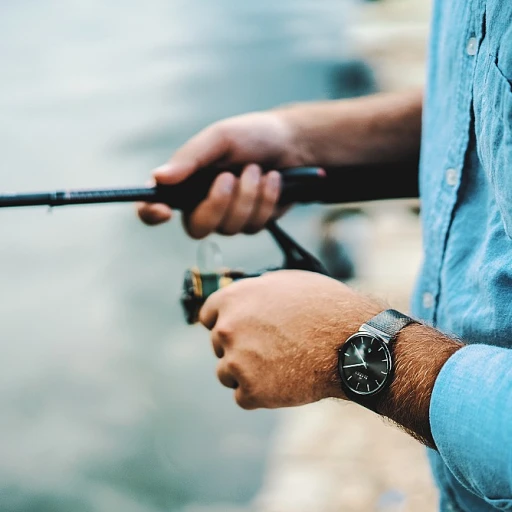
-large-teaser.webp)
